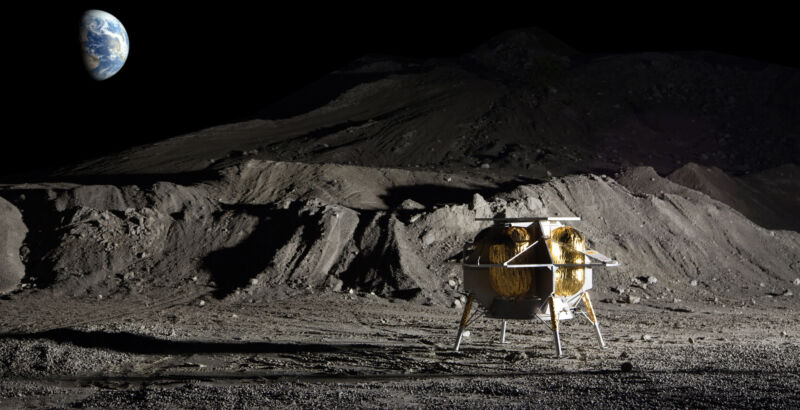NASA is supporting some seriously risky missions to the Moon—it’s about time

NASA
For more than three years, NASA has been intensely focused on the Artemis Moon program. This high-profile international effort, spearheaded by the US space agency at a cost of nearly $7.5 billion per year, seeks to return humans to the lunar surface in the mid-2020s and establish a sustainable presence in deep space.
But in recent years, NASA has been funding a second, much smaller-scale Moon program, at just 3 percent of the cost of Artemis. This is the “Commercial Lunar Payload Services” program, which seeks to use private companies to send small- and medium-size landers to the Moon’s surface for primarily science-based missions. Its budget is about $250 million per year.
This program, known as CLPS, is showing some promising signs and will beat the Artemis program to the Moon by at least a couple of years. Moreover, it represents a bold new effort by NASA’s Science division, which is seeking to leverage the emerging commercial space sector to radically increase scientific and exploration capabilities. If successful, the CLPS model of exploration could be extended to Mars and beyond.
But will it be successful? We’re about to find out.
Origin of CLPS
Like the Artemis program, the origin of CLPS can be traced to the middle of the Trump administration, when White House officials sought to refocus NASA’s exploration programs on the Moon in 2018 after a long period of heavy focus on Mars. This shift resonated with the associate administrator in charge of NASA’s science programs, Thomas Zurbuchen, who came into office in late 2016.
Since the end of the Apollo program in the 1970s, NASA had sent a handful of orbiters to the Moon but had not made a soft landing there in more than four decades. In the meantime, the space agency had landed half a dozen times on Mars and explored the rest of the Solar System.
“I had felt for quite a while that we had not focused enough on the Moon,” Zurbuchen said in an interview with Ars. “It seemed odd that every celestial body in the Solar System was interesting except the one that is in the sky every night.”
Other scientists were starting to become very engaged in lunar research, too, especially with NASA’s interest in the potential to harvest water ice at the poles of the Moon. The commercial space industry, spurred in part by the Google Lunar XPrize, had also started working on innovative lander concepts. And there was one other data point; NASA’s successful program to have commercial companies deliver food and supplies to the International Space Station had started to work well.
Zurbuchen wondered whether this public-private model might be extended to science missions. In other words, were commercial companies up to the task of building small landers, hiring private launch companies, and delivering experiments for NASA and other customers to the lunar surface?
Working with key allies inside NASA, including David Schurr of the Planetary Science Division and Steven Clarke, a deputy associate administrator, Zurbuchen established the CLPS program. After selecting a pool of a dozen US companies eligible to bid, NASA started to competitively award contracts valued at between $80 million and $100 million in May 2019 for lunar delivery missions. These costs were far less than NASA would have paid as part of a traditional procurement process.
Not all of these landers will be successful, at least initially. It represents a huge technological leap for a private company to build a spacecraft and lander and operate the craft at nearly 400,000 km from Earth. Zurbuchen used the phrase “shots on goal” to characterize this risk, consistently telling policymakers there was a 50-50 chance of success for early CLPS missions.
“You have to buy in on the risk,” Zurbuchen said. “If the chance of success needs to be 80 percent, I need to put a safety and mission assurance program onto it. And I don’t want to do that because then I’m squeezing some of the entrepreneurial energy. I just really believe that the entrepreneurial ecosystem is one of the core strengths of the United States. We’re second to none. And if we’re not using that as part of our leadership paradigm, we’re missing out.”
Read More:NASA is supporting some seriously risky missions to the Moon—it’s about time
